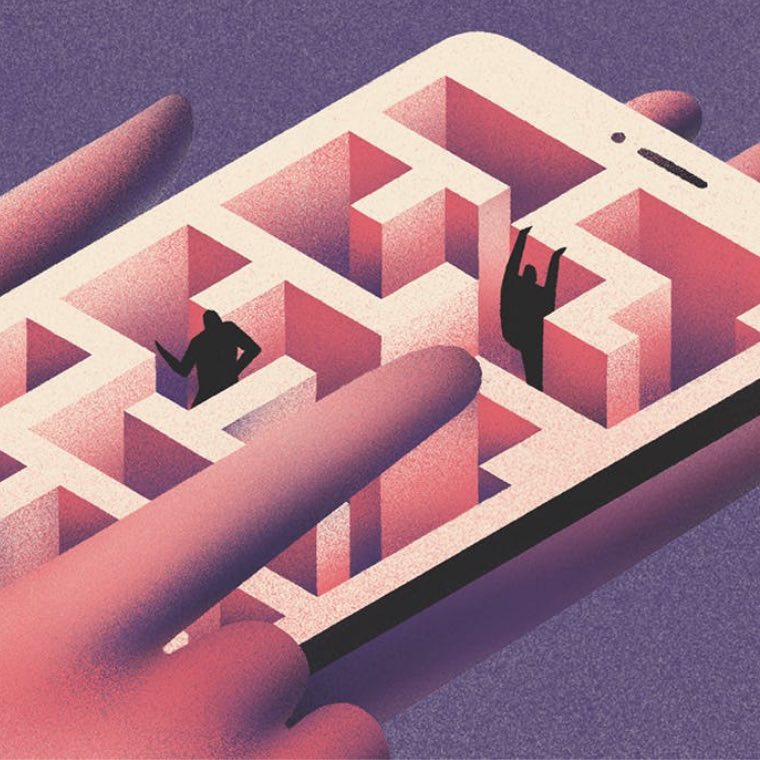
Design
Using ChatGPT in UX design
April 2024ChatGPT, everyone’s favourite AI natural language processing tool, is used for all kinds of tasks in the workplace. It can be a useful tool for marketers, copywriters and anyone who has to compose text. But how useful is ChatGPT for UX design? Elespacio’s UX expert Fernando Heller Vajda shares some examples of what it can – and can’t – do.
What it can’t do: understand the user
“ChatGPT is great at communicating research findings but not so great at research”
ChatGPT basically a chatbot. It uses natural language processing to respond to questions and prompts in a human-like way. The GPT stands for “generative pre-trained transformer” and the “pre-trained” is important.
It means that if you ask ChatGPT how customers will use a website you’re designing, for example, its answer will be generic and based on data that it has found on the internet. Its answer won’t be based on information about your real user or website.
ChatGPT is great at communicating research findings. But it’s not a great idea to use ChatGPT for UX research itself. The only way you can understand how a user behaves, thinks or feels is to talk to them. What ChatGPT can do is give ideas for interview questions, and it can present your findings – as a user persona, for example. What it can’t do (yet) is talk to your user.
What it can do: work with content
“The output is not always perfect, but it’s a good starting point”
Editing: UX designers and researchers do lots of writing, whether it’s for presentation decks, annotating design libraries or UX copy itself. I use ChatGPT to revise what I’ve written, improving the grammar, removing repetitions and so on. You can speed up the process with custom GPTs. I created one which I called British Proofreader. It preloads prompts such as “Use British spelling” and “Revise text” so I don’t need to repeat it every time I start a new chat.
Categorise content: Another thing ChatGPT is good at is organising content. I had to write content spec sheets for each page type of our client Victorinox’s website. I told ChatGPT what the page was about and described each section of the page. Then I asked it to create a table with columns for the section name, its description, its purpose for the user and another for its purpose for the business. The output is not always perfect but it’s a good starting point.
Extract key ideas from long texts: I often upload transcripts from recorded client interviews, then ask questions such as “What were the main challenges the client mentioned?” or “What did the client say about how their database works?”. This saves me taking lots of notes in the interview. I’ve also downloaded PDF presentations into ChatGPT and asked for the key takeaways. Again, it’s not perfect – there’s often a lot of irrelevant material – but it’s a good place to start.
The technical stuff: data and coding
Data analysis: I sometimes use ChatGPT to go over data sets and figure out things from them. This is normally a time-consuming task that I would have to do using spreadsheet formulas. But with ChatGPT I can upload Google Analytics ecommerce checkout data, for example, and ask “What percentage of users churn on the third step of the checkout for Mexico?”. It saves a lot of time.
Coding: I have experimented with using ChatGPT for coding. I tried to write an algorithm that connects to our time-tracking tool (which is painful to use) and suggest time entries based on historical data. I didn’t finish the project but I did manage to build, with ChatGPT’s guidance, a working algorithm using Google’s Apps Script. It’s not 100% smooth but it was quicker than learning a coding language.
Will AI replace the UX designer?
ChatGPT is a helpful tool, as long as you have an understanding of how it works and what its limits are. It can help UX designers to present and organise content and data. But it is no replacement for real-life, on-the-ground research. That is, for now, something that only we humans can do.
